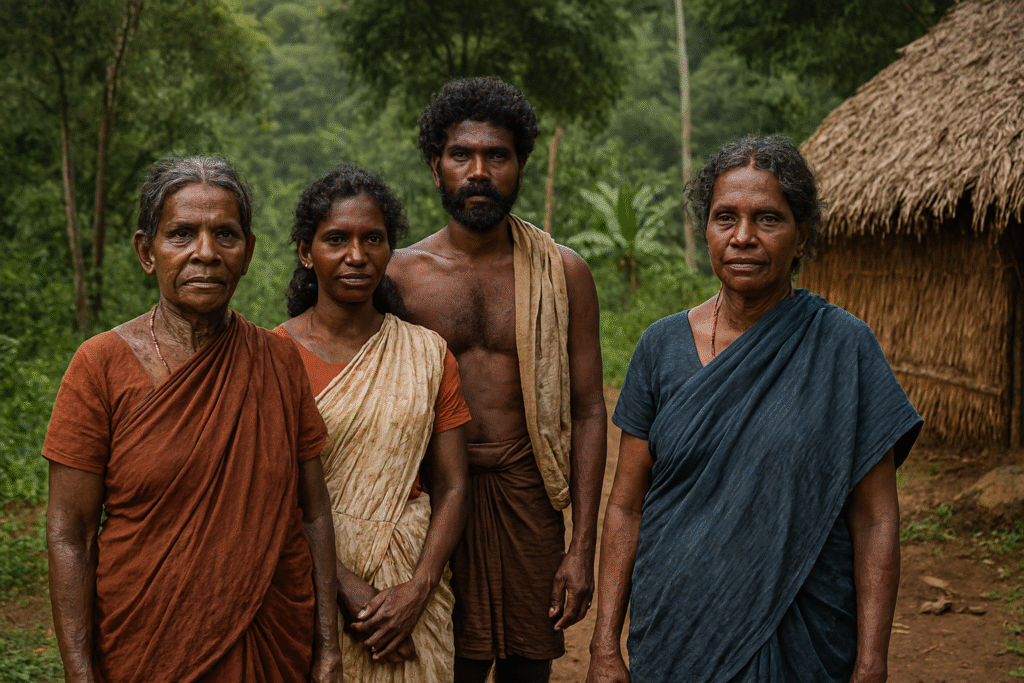India is not one story—it’s a mosaic of languages, rituals, tastes, and textures. This section explores state-wise cultural insights, festivals, foods, and traditions.

Kerala’s tribal communities preserve a way of life rooted in forest traditions, local dialects, and distinct customs. There are 35 major tribes in the state. The Paniyar are the largest.
Major Tribal Groups
Some of the prominent tribes include:
• Adiyan, Aranda, Eravallan, Mala Pulayan
• Irular, Kadar, Kanikkaran, Karimpalan
• Kattunayakan, Kochuvelan, Koranga, Kudiya
• Kurichchan, Kurumans, Kurumbas, Mahamalarar
• Malai Arayan, Malai Pandaran, Vedan, Malakkuravan
• Malarar, Malayan, Malayarayar, Mannan
• Muthuvan, Paliyar, Paniyan, Ulladan
• Urdy, Mala Vettuvan, Kurumban, Thachenadan
• Cholanaickan, Malapanickar, Vettakuruman
Major Tribal Groups
Some of the prominent tribes include:
• Adiyan, Aranda, Eravallan, Mala Pulayan
• Irular, Kadar, Kanikkaran, Karimpalan
• Kattunayakan, Kochuvelan, Koranga, Kudiya
• Kurichchan, Kurumans, Kurumbas, Mahamalarar
• Malai Arayan, Malai Pandaran, Vedan, Malakkuravan
• Malarar, Malayan, Malayarayar, Mannan
• Muthuvan, Paliyar, Paniyan, Ulladan
• Urdy, Mala Vettuvan, Kurumban, Thachenadan
• Cholanaickan, Malapanickar, Vettakuruman
Agriculture and Economy
Tribes rely on shifting cultivation.
• Land is cleared and burned before sowing.
• Crops grow during the rainy season.
• Land is left fallow to regenerate.
• Agriculture and forest products support daily needs.
Could this low-maintenance farming model offer lessons for sustainable agriculture
Agriculture and Economy
Tribes rely on shifting cultivation.
• Land is cleared and burned before sowing.
• Crops grow during the rainy season.
• Land is left fallow to regenerate.
• Agriculture and forest products support daily needs.
Could this low-maintenance farming model offer lessons for sustainable agriculture
Music, Dance, and Folklore
Art is central to tribal identity.
• Songs and dances reflect life events and beliefs.
• Drums are widely used.
• Everyone participates in performances.
• Folklore promotes nature conservation.
What role does music play in preserving tribal memory?
Clothing and Food
Traditional attire has evolved.
• Earlier garments included tree bark and leaves.
• Now, many wear dhotis, saris, or modern clothes.
• Diet includes rice, ragi, tubers, and seasonal fruits.
• Meat consumption has declined.
• Oil and pulses are used sparingly.
Have modern habits changed tribal food preferences in your region?
Religion and Beliefs
Tribal religion blends nature worship and ancestral spirits.
• Hills, streams, caves, and trees are sacred.
• Some worship Hindu deities like Siva and Ayyappa.
• Rituals are led by priests and healers.
• Festivals include Valliyoorkkavu and Malleswaran Peak worship.
Do tribal beliefs offer a different way to connect with nature
Social Structure and Governance
Tribal villages are organized into small units.
• Settlements are called Padi, Kudi, Janmam, Koottam, Nad, Koyma.
• Each unit has a chieftain.
• Some tribes have wider councils.
• Customary laws guide social interactions.
